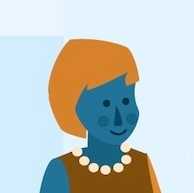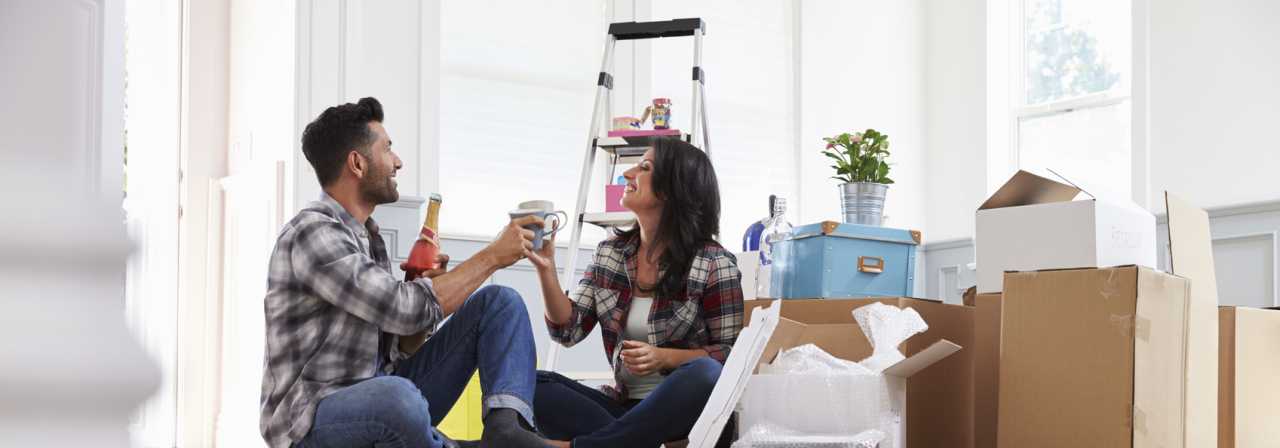Finding housing in Denmark will not be an easy task. No matter if you are renting or buying, homes are high in demand and prices are equally as high. For expats, the rental market might be even less favorable. Get acquainted with the Danish terms for renting houses and apartments as soon as you can as these can be confusing. If you wish to buy a house, you should know housing prices in Denmark are the highest they have ever been, and they are only expected to increase. We cover the different types of houses you will find in the country, so you know which purchase best suits your needs.
In case you need a place to stay when you first arrive in Denmark, short-term rentals are also covered in this section. These should not be difficult to secure although many of the options you will find are for shared houses and spaces.
Advertisement
Jürgen Hofmeister
The various InterNations activities for expats in Copenhagen made me feel welcome immediately.
Sarah Porter
InterNations expats let me see that there's much more to Copenhagen than clichés like The Little Mermaid and Tivoli...
Jump right in:
Advertisement
Why you'll love InterNations in Denmark
and countless possibilities for fun and friendship!
Advertisement
Advertisement
Renting a House or Apartment
Find out everything you need to know about how to rent houses or apartments in Denmark, from average rent prices to the tips you need for finding accommodation in the country as a foreigner.
Renting in Denmark as a Foreigner
As a foreigner, there are a few key things you may not know about the rental market in Denmark. In cities like Copenhagen and Aarhus, it is very difficult to find accommodation, and not just for expats. Prices are high and it could take years to find an affordable place. The most common way people find places is through connections. Apartments for rent are known as lejebolig. You will find both furnished and unfurnished apartments, and most housing websites will let you choose between one or the other. In Denmark, an unfurnished accommodation will typically have a semi-furnished kitchen with a stove, oven, and fridge. Some places may even include a freezer, washing machine, dryer, and dishwasher. If you do rent an unfurnished place, you are expected to paint the walls and repair any floor damages before leaving.
Rental Process and Rules
- You may hear that landlords have the power to evict a tenant who has been living in their property for less than two years. This is not true. Your landlord will always need a legitimate reason to evict you.
- When your tenancy is over, it might be tricky to get your deposit back from your landlord if they accuse you of damaging the property or belongings. To make sure you get your money back at the end of your tenancy, take pictures of the apartment’s conditions when you first move in. In some cases, it is even advised to print the photographs, mail them to a friend, family member, or lawyer, to serve as legal proof.
- Landlords can and should do an inspection of their estate two weeks prior to the start of the tenant’s lease. If they fail to do this, they cannot hold the tenant’s deposit at the end of the tenancy, irrespective of the state of the apartment or house.
Requirements and Documents for Renting
Requirements for EU citizens and foreign citizens might be different. Nationals of the European Union may not be asked for a job contract although the landlord will typically want proof of income from their tenant. However, nationals of non-EU countries will need to show proof that they are legally living in Denmark, which more often than not requires having a job for visa purposes.
There are mandatory reports you must fill in (such as the indflytningsrapport and the fraflytningsrapport) for the beginning and end of your tenancy, respectively. Both documents should contain a list of all the flaws of the apartment. Make sure all the flaws you identify in the property are listed in the “moving in report” and never sign a “moving out report” which accuses you of damages you did not cause.
Rental Contract and Deposit
You will usually sign a rental contract. You can see an example of a rental contract in Denmark beforehand to familiarize yourself with the document. You are also asked to pay a deposit which is returned to you at the end of the tenancy if there are no damages to the property. The deposit is usually paid along with the first rent and it can be equivalent to one month to three month’s rent.
Your contract should include the following:
- landlord’s full name and address
- start and end date of the rental agreement including terms of renewal
- monthly rent value and deposit
- brief description of the place and shared spaces in the building
Utility Bills Payment
The way utility bills are paid in Denmark may differ from what you are used to. Here are some basic guidelines for paying utility bills in Denmark:
- Utilities are typically not included in the rent price.
- Some bills are paid by the landlord while others are paid by tenants. Whatever is agreed between the landlord and tenant on who pays each bill should be stated in the rental contract.
- Gas and water bills are typically paid by the tenant directly to the landlord. The tenant pays an estimate of these bills each month, along with rent. Once landlords receive the actual bill, any difference in pricing must be corrected between the landlord and tenant.
- Electricity and internet bills are usually paid by the tenant.
- Every household is also expected to pay a media license, if they own a TV, laptop, tablet, or smartphone. This fee is paid directly to the state broadcaster, Danmarks Radio (DR).
- Utility bills are based on an estimation of consumption which is then adjusted annually when the meters are read.
- You have 14 days to pay your utility bill. If you choose to pay your utility bills with a bank or a post office, you will be charged a fee of 10 to 15 DKK (1.50—2.20 USD). Paying through the Danish direct debit service operated by banks known as PBS Betalingsservice or through online banking is free of charge.
Average Rent in Denmark
Below you will find the average monthly rent for an 85 square meter apartment in Denmark’s main cities.
| City | Rent DKK | Rent USD |
Copenhagen | 16,600 | 2,411 |
Aarhus | 11,800 | 1,714 |
Odense | 10,000 | 1,453 |
Aalborg | 8,500 | 1,235 |
Minimum House Rent in Denmark
Minimum rent will vary significantly on the city. For example, in the capital Copenhagen, you would not pay less than 5,800 DKK (865 USD) for a one-bedroom apartment. In the city center of Aarhus, the lowest rent price you would find for a one-bedroom apartment is 4,500 DKK (670 USD).
In other parts of the country, prices can get significantly lower at around 4,000 DKK (600 USD) for a one-bedroom or 6,000 DKK (800 USD) for a three-bedroom.
Maximum House Rent in Denmark
There is a maximum rent price per square meter allowed by law. For example, you should not pay more than 5,000 DKK (745 USD) for a 50 square meter apartment in Copenhagen. However, this only applies to apartment buildings which have been built before 1992. If the building dates from that year or later, tenants may ask for whichever price they see fit.
However, even for older buildings, landlords do charge above this limit most of the time. If you find that you are paying more than is allowed, you can start a case at court to have your rent lowered to the legal price, even after signing a rental contract and having paid more than you should. In this case, your landlord will have to give you back any amount that was inadequately charged.
Short-Term Rentals: Average Price and Things to Know
If you have not secured a place as soon as you find yourself in Denmark, you may need a temporary rental. You can find accommodation on popular vacation rental websites for around 370 DKK (55 USD) a day.
Denmark is known for its culture of home sharing. You may find that many of the apartments listed for short-term lease are shared, either with the hosts or with other travelers or expats.


Advertisement
Buying Property as a Foreigner
Knowing how to buy a house or property as a foreigner well in advance will greatly reduce the chances of making a serious mistake, or worse, being scammed. You can use this guide to help you through the house buying process in Denmark.
Danish House Prices
The Danish real estate market is quite competitive, especially if you wish to buy lower-end properties. The cheapest houses (between one and three million DKK (around 149,000 and 445,000 USD)) are extremely sought-after. This means they sell fast regardless if they are a good deal or not, leaving you with little to no bargaining power.
On average, a 140 square meter apartment costs 1,923,000 DKK (286,220 USD). However, prices will vary greatly by region. While in Copenhagen, the same size house will cost more than five million DKK (750,000 USD), places like Jutland and Bornholm are considerably cheaper—at 1.2 million DKK (179,000 USD) and 990,000 DKK (147,000 USD), respectively.
Types of Properties in Denmark
As if being a homeowner was not complicated enough, the Danes have added a list of property names and specificities of ownership that can overwhelm even the most experienced of expats.
Apartments
Apartments, or lejlighed, are common throughout the country, and even more so in city centers. Floors closer to the ground tend to be cheaper than higher floors, even though most apartment complexes do not have an elevator.
When it comes to purchasing apartments, it is important to distinguish between ejerbolig and andelsbolig. If you purchase an ejer, be it an apartment or house, you own it. You may choose to live there or rent out the property. You will have to share some expenses with other homeowners, such as cleaning, garbage removal, building insurance, etc.
Andels, on the other hand, is the term for shared ownership, meaning you own a share of the building or association. The price of these types of homes is usually lower than ejers. However, you are not allowed to rent your place or to set the selling price, and you will pay more for running costs than if living in an ejer.
Houses
House, or hus, are more common in the suburbs and the countryside.
- A rækkehus, or terraced house, consists of several houses in a row, all sharing its outer walls.
- A villa or hus is a typical detached home, normally occupied by families. These houses usually come with a private garden.
- Sommerhus is a summer house or a vacation home.
Process and Steps of Buying a House in Denmark
- The first step is to find the right property. You can look for a home in specialized websites, local press, or through real estate agencies.
- Check your credit score with a bank. If you already found a place you are interested in, you should present the bank with a salgsopstilling.
- You should start looking for options of loans or mortgages. Banks do not usually give out loans for properties that cost three to five times more than your yearly gross salary, whether you are Danish or not. However, as an expat, you may have more difficulty getting a loan from a bank.
- The seller should give you a property report listing its characteristics—the number of rooms, square meters, energy efficiency, and defects. This document is not mandatory but most sellers will provide one to ensure they are not made liable for any future damages to the property.
- The seller’s real estate agent drafts a purchase agreement or contract.
- A deed of conveyance is drawn up by the buyer’s attorney which must be registered at the local land registry office.
- The final contract must then be signed by both parties and notarized.
- Once the contract is signed, the buyer should deposit the first down payment. As an expat, you may be asked to put in a higher down payment of around 10, 15, or even 20% of the value of the house versus the usual 5%. You may be able to go around this by consulting with more banks and advisors to see which ones can offer you a better deal.
Requirements for Buying Property in Denmark
All expats need to have lived in the country for at least five years if they wish to buy property in Denmark. On top of this, expats who are not from the EU/EEA need permission from the Danish Ministry of Justice to buy property, a process which is usually carried out by a lawyer.
In general, if you do not have residence in Denmark, you are not allowed to buy property in the country. That is true whether you are an EU/EEA citizen or a citizen of a third country. To buy property under the same conditions as a Dane, you must be living in the country for at least five years. If you move out of the country before completing five years of residency, you are obligated to sell your house—and you only have six months to do so. Consider that you may end up losing quite a bit if the real estate market is not favorable within this six-month period.
You can ask the Department of Civil Affairs for an exemption of this rule of residency if you can make a case for having strong ties with Denmark.
Buying a House in Denmark to Get Citizenship or Permanent Residence
If you want to know if you can buy a house in Denmark to get a visa, the answer is short—no. In fact, it is quite the opposite: you are required to have a visa and be a resident in the country to buy property.
You also cannot buy property in the country in the hopes of obtaining citizenship or permanent residence. To be a permanent resident, you must live in the country for a minimum of eight years (four years, in some cases). Check our section on Visas and Work Permits to know more about visas and permanent residency in Denmark.


Utilities
Get to know the top utility companies in Denmark and get a jump start on your living situation before moving to the country.
Electricity and Gas in Denmark
When it comes to getting electricity in Denmark, you will need two different services—a supplier (elleverandøren) and a network operator (netselskabet). The supplier provides the actual electricity while the network operator owns the cables and wires that distribute that electricity. You are charged for both services. If both are provided by the same company, which is sometimes the case, you only receive one electricity bill.
The main network operator and provider in Denmark is Ørsted (previously Dong Energy), which provides both electricity and gas supply. You can also choose GIVE ENERGIANLÆG ApS or SEAS-NVE A.M.B.A, among other companies.
How to Connect to Electricity and Gas
You must contact the utility provider to request their services. The soonest you can do so is two months before moving in and the latest is 14 days after.
You can switch electricity or gas providers at no cost.
Water in Denmark: Things to Know
The first thing you should know is that Denmark has some of the cleanest, best tasting water in the world—there is even a Grand Prix that makes local companies compete for the title.
The water supply in Denmark is highly decentralized. There are several companies spread throughout the country that operate at a municipal level. This makes the entire supply more efficient but also costly. Water bills charge you for drinking water, wastewater, green taxes, and VAT, adding up to an average of 70 DKK (10 USD) per cubic meter. In addition, you must also pay a fee for the water meter. Having a water meter is mandatory for every home. You are charged based on your consumption and the water meter is read annually.
Almost half of the water is supplied by consumer-owned water companies, which are non-profit, and the other half provided by municipal-owned utilities. All companies are regulated by the Ministry of Energy, Utilities, and Climate, making water utilities in Denmark a mainly public sector rather than private.
Internet and Mobile Phones
Most companies in Denmark offer packages which include internet, cell phone, landline, and television services.
These services are fast and relatively cheap at around 200 or 300 DKK (30 to 45 USD) a month. The shortest contract you will usually find is for six months. You can rent or buy the equipment you will need (such as a router or cables) for a fee.
You can contact a service provider one week before moving into your new place, but you cannot do so while abroad—you must wait until you are in the country.
Some of the main internet and mobile providers are:
- Lebara;
- Stofa;
- Tele-Denmark Communications;
- Telenor;
- Telia.
Requirement to Request Internet and Mobile Services
To access these services, you will need a CPR number (a 10-digit number equivalent to a social security number).
To get a CPR, you must be staying in Denmark for longer than three months and be entitled to residency. You must also have a place to live and actually live there to qualify for this registration.
How to Get a SIM Card and Phone Number
Most of the companies’ packages offer pay-as-you-go mobile services. You can request your SIM card with your service provider.
If you prefer a pre-paid SIM card, which does not require a contract, you can purchase one at kiosks, supermarkets, or gas stations.
Danish Television
The public television broadcaster in Denmark is Radio of Denmark (DR). Most channels are in Danish but some programs and TV shows are broadcast in English with Danish subtitles.
You can watch your home country’s TV in Denmark if it is compatible with the television transmission standard used in Denmark, which is PAL.
Advertisement
Our Global Partners
Communities in Denmark
Like-Minded Expatriates in Denmark
Denmark Guide Topics
Advertisement





